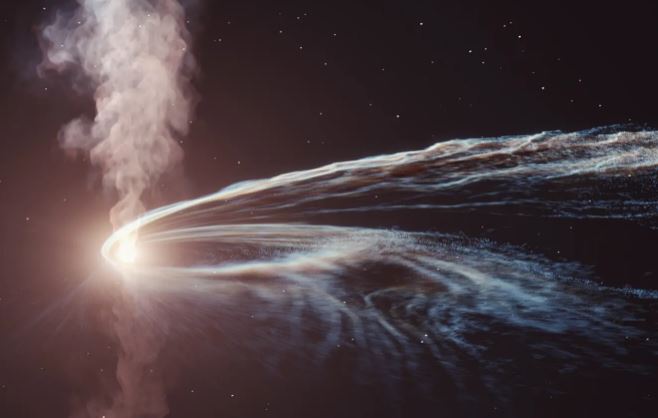Shanghai Jiao Tong University said on Friday that a reconnaissance mission in the South China Sea has discovered a suitable spot for the construction of China’s first deep-sea neutrino observatory.
The observatory for Project Hai-Ling, or the Bell of the Sea, is expected to be erected 3,000 meters beneath the sea surface by 2030 to detect astrophysical neutrinos, which are electrically neutral elementary particles with a significantly smaller mass than other known elementary particles.
Neutrinos offer information to explore the most violent astrophysical sources, such as exploding stars, gamma-ray bursts, and catastrophic events involving black holes and neutron stars, as high-energy astronomical messengers.
A group of Chinese scientists and engineers traveled to the South China Sea earlier this month to assess the feasibility of constructing a next-generation neutrino telescope array, and the project scientists reported that preliminary data returned from the journey was favorable.
“The water is crystal clear, and the current is gentle. It’s an excellent potential location “Xu Donglian, a research fellow at the university’s Tsung-Dao Lee Institute, is the project’s principal scientist.
“Building a deep-sea neutrino observatory closer to the equator will complement the worldwide multi-messenger observatory networks.”
Neutrinos are difficult to see because they interact weakly. Neutrinos were initially proposed in 1930, but they were not discovered until 1956.
Since then, many neutrino observatories have been created to catch the elusive particle as a method to investigate astronomical phenomena that are inaccessible to optical telescopes, such as the Sun’s core and supernovas.
Hundreds of cables will be stretched down to the seabed for Hai-deep-sea Ling’s telescope, with about 20 to 30 optical sensor modules linked to each cable to detect weak light in the deep sea from charged particles coming from neutrino collisions with the water in the area of the detector.
In 1960, Soviet physicist Moisey Markov suggested the concept of detecting neutrinos using a huge volume of clear water, but the first generation of neutrino observatories were too small to collect neutrinos efficiently.
The Hai-Ling project intends to construct a telescope array with a length and breadth of several kilometers and a depth of about one kilometer from 2,500 to 3,500 meters below sea level, similar to a paddy of seaweed grown on the seabed.
IceCube, the world’s biggest current neutrino observatory, is a cubic kilometer in size and was erected more than 1,500 meters beneath the ice of the South Pole in 2010. In 2013, it made the first observation of cosmic neutrinos in the globe.
“The Hai-Ling will be a much larger ‘net’ for scientists to capture neutrino particles,” Xu said, noting that next-generation water-based neutrino observatories, such as the Cubic Kilometre Neutrino Telescope, or KM3NeT, at the base of the Mediterranean Sea, and the Baikal Gigaton Volume Detector in Russia’s Lake Baikal, the world’s largest freshwater lake, are also expected to be built.
“The neutrino telescope has the potential to enable ground-breaking scientific discoveries,” she added, citing the identification of cosmic ray sources as one example. “Interdisciplinary research in particle physics, astrophysics, and marine geology can all benefit from this effort.”
The project faced significant engineering problems, according to Tian Xinliang, associate professor at the university’s State Key Laboratory of Ocean Engineering, because the telescope will occupy more than 10 cubic kilometers of water and be anticipated to function reliably for 20 to 30 years.
“Designing, installing, and maintaining the world’s largest deep-sea research infrastructure needs a lot of creativity and collaboration across diverse disciplines,” he added. “We are certain that we will overcome these challenges since our institution has unique capabilities in shipbuilding, maritime engineering, materials, and electronics.”


